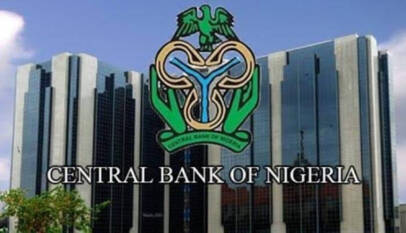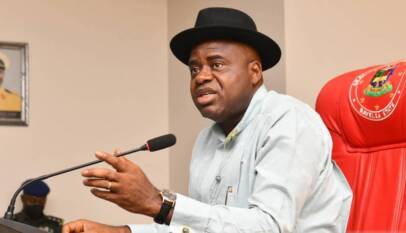– 48.6% increase raises concerns over fiscal sustainability
By Douglas Maha, Business Editor
ABUJA – Nigeria’s total public debt rose sharply to ₦144.67 trillion as of December 31, 2024, representing a 48.58% increase compared to ₦97.34 trillion recorded in the previous year, according to the latest figures released by the Debt Management Office (DMO).
The debt burden—external and domestic obligations—highlights the Federal Government’s continued reliance on borrowing to plug budgetary shortfalls, fund infrastructure, and manage macroeconomic instability.
A Breakdown of the Numbers
Year-on-Year Comparison (₦ Trillions)
| Category | Dec 2023 | Dec 2024 | % Change |
| Total Public Debt | ₦97.34 | ₦144.67 | +48.58% |
| External Debt | ₦38.22 | ₦70.29 | +83.89% |
| Domestic Debt | ₦59.12 | ₦74.38 | +25.77% |
| – FG Domestic | ₦53.26 | ₦70.41 | +32.19% |
| – States & FCT | ₦5.86 | ₦3.97 | -32.27% |
Debt Structure: Almost Evenly Split
As of the close of 2024, Nigeria’s debt composition reflects a near-even split:
| Segment | ₦ Trillion | $ Billion | Share of Total |
| External Debt (Total) | ₦70.29 | $45.78 | 48.59% |
| • Federal Government | ₦62.92 | $40.98 | |
| • States & FCT | ₦7.37 | $4.80 | |
| Domestic Debt (Total) | ₦74.38 | $48.44 | 51.41% |
| • Federal Government | ₦70.41 | $45.86 | |
| • States & FCT | ₦3.97 | $2.58 |
Expert View: Exchange Rate Poses Debt Service Risk
Economic analysts have flagged the growing external debt as a major concern in the face of exchange rate instability. With the naira under continued pressure and foreign earnings limited, the cost of servicing dollar-denominated debt could escalate substantially.
“Every naira of depreciation increases the government’s obligations in local currency. It’s a fiscal time bomb if not managed prudently,” said a Lagos-based macroeconomist.
Nigeria’s debt-service-to-revenue ratio, already one of the highest in the developing world, is projected to exceed 90%, further constraining funds available for social services, capital projects, and recurrent spending.
States Reining in Borrowing
Interestingly, while federal debt rose significantly, debt attributed to states and the Federal Capital Territory (FCT) declined by over 32% year-on-year. Analysts believe this reflects a combination of factors, including:
- Stricter access to capital markets
- Subnational fiscal caution
- Deprioritization of loan-backed capital projects due to elections or transitions
size=2 width=”100%” align=center>
Policy Recommendations
Experts are calling for urgent reforms to manage Nigeria’s ballooning debt, including:
- Boosting non-oil revenues through tax reform and broadening the base
- Reducing debt reliance by tackling waste, corruption, and inefficiency
- Ensuring transparency in debt usage to guarantee economic returns
- Promoting FX stability to cushion external repayment costs
“Borrowing is not the issue. The question is: are we borrowing for growth or survival?” said a senior economist at the Nigerian Economic Summit Group.
Debt Continues Upward in Q4
In a quarter-on-quarter view, total debt grew by ₦2.35 trillion or 1.65%, rising from ₦142.32 trillion at the end of September 2024.
| Category | Sept 2024 | Dec 2024 | % Change |
| Total Public Debt | ₦142.32 | ₦144.67 | +1.65% |
| External Debt | ₦68.89 | ₦70.29 | +2.03% |
| Domestic Debt | ₦73.43 | ₦74.38 | +1.29% |
| – FG Domestic | ₦69.22 | ₦70.41 | +1.72% |
| – States & FCT | ₦4.21 | ₦3.97 | -5.69% |
The slight increase in both domestic and external borrowings in Q4 was attributed to additional loans secured by the Federal Government and further depreciation of the naira, which inflated the naira value of foreign loans.
Outlook: Managing the Tipping Point
The current debt trajectory could become unsustainable if Nigeria strengthens its fiscal framework, expands its productive base, and deploys a more strategic borrowing plan. While infrastructure gaps and development needs persist, analysts warn that future borrowing must be cautiously calibrated to avoid burdening future generations.
For more economic coverage, visit the Business Section www.naijadaily.news
To submit an op-ed or respond to this story, email: editor@naijadaily.news



































